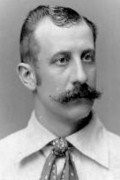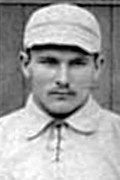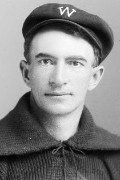Published every Saturday & Sunday.
The Blackbirds, 1893-1894
After the collapse of the NY&PL, the EAA attempted to attract a team from the new Eastern League, to relocate in the middle of the 1892 season, but insufficient cash and lack of a proper field derailed the plan. The league was considered Class A when formed in 1892.
In March 1893, the members of the EAA agreed to raise $2,000 to apply for admittance to the EL as well as for improvements to the ballpark. Erie became the western outpost of the Eastern League, which stretched across Pennsylvania and New York to Massachusetts and Rhode Island.
They hired Charlie Morton, who had briefly played in the American Association in the 1880s, before managing many minor league clubs, to recruit players and manage the club. The team's new field was built at West 9th and Cascade Streets. The team was nicknamed the Blackbirds, perhaps because they, like their predecessors, sported all-black uniforms with white lettering.

The Blackbirds' starting roster was an experienced one:
P: Cushman, "Dad" Clarke, Hank O'Day
C: Berger, J. E. Zimran
1b: Jim Field
2b: "Deacon" Nicholson
3b: F. Shiebeck
SS: Maguire
LF: Van Dyke
RF: Al Mays
CF: Shearon
Ed Cushman pitched for several major league teams in the 1880s. By this time he was in his 40s. He appeared in only a handful of games for Erie before retiring. "Dad" Clarke, still in his 20s, had had a cup of coffee in the majors, and then bounced around the minors for several years. After playing for Erie, he would go on to appear in almost 100 games with the New York Giants and Louisville Colonels in the National League. Hank O'Day had just turned 30. He had appeared in 200 games in the bigs, but had not played in the major leagues since developing arm problems in 1890. His stint with Erie would also prove to be the end of his playing career, but he went on to umpire in the NL for the next 30 years, for which he was inducted into the Hall of Fame.



John Henry "Tun" Berger's major league career was already over at age 25. He had been a utility man for the Pittsburgh and Washington NL teams the previous three seasons. Jim Field had bounced around the American Association for several years before being recruited by Erie. Thomas Clark "Deacon" Nicholson (also nicknamed "Parson") had played second base for Detroit in the NL and Toledo in the AA.



Bill Van Dyke had appeared in over 130 major league games before starting for Erie. After finishing the season, he was called up by the Boston Beaneaters of the NL. John Shearon played briefly for the Cleveland Spiders of the NL, but appeared in over 900 minor league games in his career.


Erie won the pennant in their first season, with Clarke leading the league with 31 wins. Nicholson lead all second basemen in fielding. Erie finished with a 63-41 record, edging out Springfield by two games. All eight teams completed the season, a rarity for the early minor leagues.
Erie had a disappointing season the next year, finishing third in 1894. The team was a money loser, not even able to pay the players what they were owed. Erie was not the only team in financial trouble. Troy disbanded on July 26 and was replaced by Scranton. Binghamton disbanded on August 16 and was replaced by Allentown. Wilkes-Barre also failed. Several franchises were reported to be missing payroll or selling players. The panic of 1893, which lasted until 1897 was one of the worst depressions in the country's history, and unemployed workers did not have money to go to baseball games. Reports in mid-season complained of crowds of only a few hundred at home games. The Erie franchise was bought out and moved to Toronto for 1895, while the EL's Buffalo owner purchased its players, several of whom bolted for other leagues during the off season.
While some attempts were made in the succeeding years to land a team in another league, there followed a decade-long hiatus in professional baseball in Erie. A group of four amateur teams formed the City League in 1901. In 1904 Frank Baumeister and Dan Koster hired players from this league to staff an independent team, like the earlier Keystones, that played other independent teams in the area. By the early 20th century, the city was expanding rapidly, and boosters wanted a local baseball team to help advertise their hometown.
